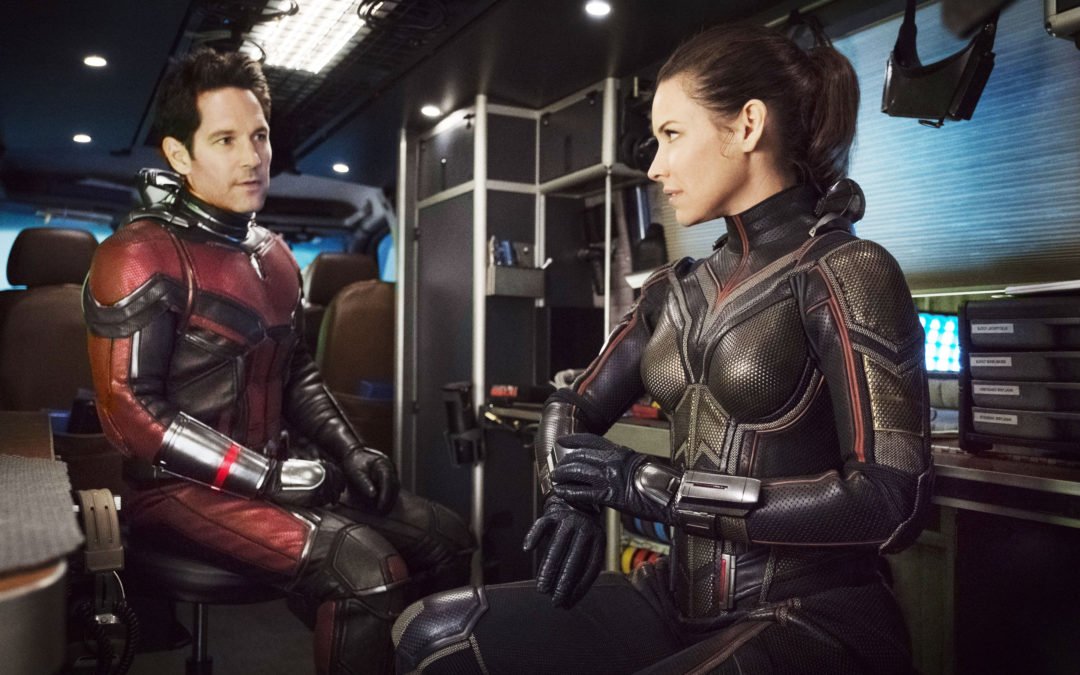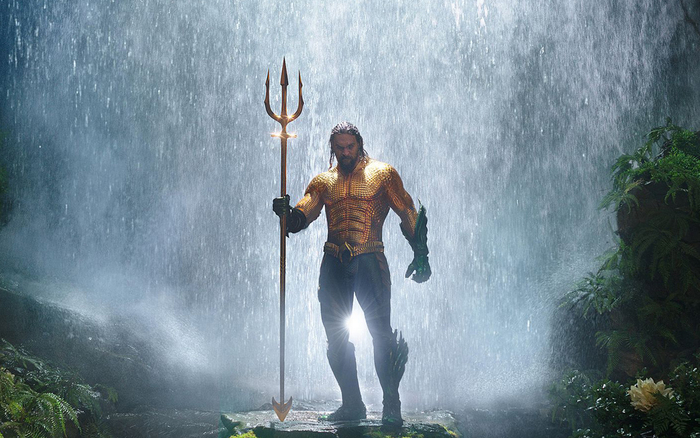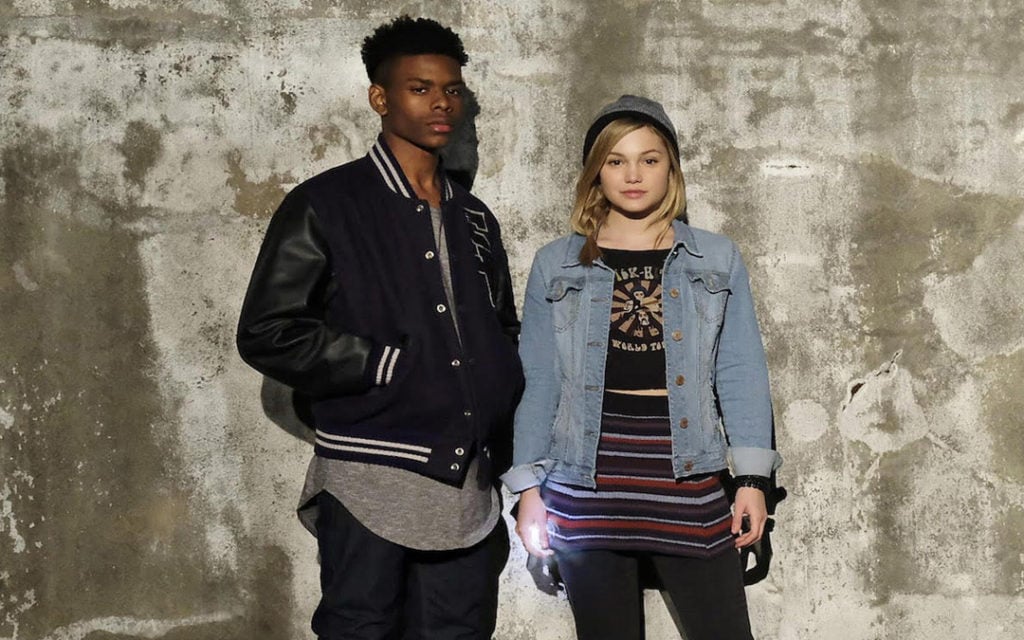All The Write Moves: 'Watchmen'
November 11, 2019
Once the camera focuses on a newspaper headline that reads, “Global Squidfalls Baffle Experts,” it’s evident that viewers have entered the land of Damon Lindelof. Inventive, mischievous and thoughtful, writer-producer Lindelof has provided some of Peak TV’s most perplexing moments, beginning with his role as the co-creator of Lost and continuing with his work helping to adapt Tom Perrotta’s post-apocalyptic novel The Leftovers into an HBO series. Now Lindelof is back as the developer and pilot scribe of HBO’s Watchmen, a sorta-kinda adaptation of the 1980s DC Comics series created by writer Alan Moore and artist Dave Gibbons.
Squids inexplicably falling from the sky are just one of many strange things that happen in the first episode of Watchmen, which replaces the source material’s anxieties about Reagan/Thatcher-era politics with contemporary anxieties about the environment, police violence, and race relations. The first episode also includes history lessons, a police sergeant who wears a giant panda mask, terrorists who transport lettuce in pickup trucks, a coke-sniffing police chief, and, of course, those troublesome squids.
Lindelof revels in throwing one wild idea after another at the audience, compelling viewers to contemplate difficult social issues and intricate puzzles while also getting to know characters and tracking plot developments. All of this explains why Watchmen is so useful for exploring techniques that are used to create truly challenging television.
Into the unknown
If the Watchmen brand seems familiar, that’s because the comic book was adapted into a feature film 10 years ago by director Zack Snyder and screenwriters David Hayter and Alex Tse. Running a hefty 163 minutes, the picture tried to cram in as much content from the original 12-issue comic as possible. Unsurprisingly, the movie divided audiences in many ways, and not just because the subject matter — nominally about a conspiracy to murder superheroes — is so dark. Fans of the comic questioned why certain elements were excised or poorly translated. Meanwhile, many viewers unfamiliar with the source material found the film’s complex plot incomprehensible.
Tasked with adapting this problematic material for a new medium, Lindelof took a characteristically adventurous approach — he invented a brand-new storyline that takes place decades after the events of the comic. Although some characters and themes overlap, the TV version of Watchmen is largely a stand-alone narrative situated within the alternative universe of the source material.
Lindelof’s Watchmen takes place in a fictionalized version of Tulsa, Oklahoma. Angela Abar (Regina King) is a retired policewoman who claims to work as a baker — but actually operates as a police-sanctioned vigilante called Sister Night. When clues suggest that a white-supremacist organization called the Seventh Kavalry has resumed activities after a long period of dormancy, Angela works with Tulsa’s chief of police, Judd Crawford (Don Johnson), to fight the Kavalry.
It is correct to say that the main focus of the pilot is a battle between heavily armed racists and a badass African-American woman. Yet it is also correct to say that race is just one of many things the pilot explores. There’s also, for example, a significant subplot involving Jeremy Irons, a mysterious aristocrat living in a remote castle. Viewers are asked to wait to learn what each part of the show has to do with the other parts — and that’s on top of processing pure head-scratchers like the whole business with the squids.
What is one to make of all this weirdness? Frustratingly, the question is also the answer. From an audience perspective, the pleasure of experiencing Watchmen involves traveling to unexpected places. From a creative perspective, the challenge of rendering something like Watchmen involves establishing structural parameters that are loose and wide enough to encompass an almost infinite number of concepts. This is far easier said than done.
Telling stories this way is a high-risk endeavor, and it’s useful to remember how many fans cried foul at the end of Lost. As always, Lindelof deserves great credit for his willingness to indulge narrative wanderlust, because doing so helps deliver genuinely unique television moments. Nonetheless, the inherent danger of venturing into the unknown is that it’s very easy to get, well, lost. Only time will tell if Watchmen finds clarity or evaporates into vapor.
Takeaway: Following story concepts down unexpected pathways can lead to exciting storytelling — but also to incomprehensible storytelling.
Then and now
Drawing parallels between the past and the present is a fairly common narrative maneuver, but the way Lindelof does this in the Watchmen pilot merits attention.
The show opens on a movie-within-a-movie featuring a black lawman (based, incidentally, on a real historical figure) confronting a white villain. For some storytellers, this would be enough to set the stage for what follows, but Lindelof takes the experiment a few steps further. Pulling out from the movie screen, the camera reveals a little boy and his mother inside an otherwise empty theater. Then the third member of the family, the boy’s father, enters the theater carrying a gun, at which point the whole group exits the theater into a nightmare. They are in the midst of the so-called Black Wall Street Massacre, which occurred in Tulsa in 1921. During this incident, white supremacists destroyed a thriving black neighborhood and killed many of the neighborhood’s residents.
After this prologue ends, the show segues to the present with no clear indication of how the prologue connects to the main story. Some clues emerge as the pilot episode moves along, but the most important links between then and now don’t arrive until the second episode.
Why might Lindelof have used this unusual storytelling strategy?
Firstly and most obviously, the 1921 prologue is a tease — stimulating audience curiosity in order to sustain viewer engagement. Secondly, the stretching-out of the mystery serves a character-development function when Angela/Night discovers a connection between current events and 1921. Thirdly, by withholding his reasons for invoking the Tulsa massacre, Lindelof creates an even stronger teachable moment than he would have been able to create otherwise. Leaving the mystery intact for so long compels viewers to stew in the feelings that the riot scene triggered, and it further compels viewers to imagine sociocultural reasons why the Tulsa massacre is relevant, as opposed to mere plot reasons.
Integrating traumatic events from history demands responsibility, because past horrors shouldn’t be exploited for cheap shock value. Watchmen demonstrates some ways that TV writers can draw historical parallels purposefully.
Takeaway: Reminding viewers that history repeats can be effective, but doing so requires forethought about the baggage that history brings.
No explanation necessary?
It’s time to talk about the squids again. As has been discussed at length, very often Lindelof introduces a plot element without any intention of explaining that plot element until several episodes down the road. The squids falling from the sky are the most bizarre such element in the Watchmen pilot, but they are not the only one. During a climactic fight scene, Crawford watches the action from the safety of a command vehicle. When bad guys try to flee by plane, viewers discover exactly which command vehicle Crawford occupies — it is the Owlship from the original comic.
For those unfamiliar with the vehicle, the Owlship is a spherical flying vessel shaped approximately like an owl’s head, with giant circular front windows that resemble an owl’s eyes. In the comic, this craft is piloted by a superhero named Nite Owl. In the TV show, absolutely zero explanation is provided (at least during the pilot) as to how or why the ship came into the possession of Tulsa’s police department. Furthermore, the ship is never even named in dialogue, so viewers who don’t know the source material are left completely in the dark about the nature of the fantastical craft.
The sudden and unexplained appearance of the Owlship raises the thorny topic of exposition. Some screenwriters despise exposition, believing it to be an unnatural device that undercuts realism. Other screenwriters embrace exposition as a means of ensuring that viewers can track story elements.
Which side of this debate offers the most persuasive argument?
The argument for exposition is plain. Quick chatter after the Owlship sequence, relating who built the vessel and how it came into police usage, would eliminate audience confusion. The argument against exposition is just as plain. The chatter that was just suggested could easily sound forced, as if the dialogue is for the benefit of the audience rather than something characters would believably say.
But here’s the tricky part — each project has different parameters, and so does each individual scene. Given Lindelof’s style, the mystery of the Owlship is on brand. But in other Watchmen scenes, he provides clear exposition, as when Angela/Night and Crawford discuss how long the Seventh Kavalry was dormant. Inconveniently, there are no absolutes when it comes to exposition. Sometimes exposition is a helpful tool, and sometimes it is not. The deciding factor is necessity. If a scene can work without exposition, then cutting exposition may result in faster and more intriguing storytelling. But more often than most screenwriters would like, exposition is the best solution to a narrative problem.
Takeaway: Even writers who generally shun exposition must use it occasionally.
Written by: Peter Hanson
Peter Hanson is a Los Angeles-based writer, filmmaker and teacher. He directed the screenwriting documentary Tales from the Script, and he teaches at Pepperdine University and UCLA Extension. He provides script consulting at www.GrandRiverFilms.com.- Topics:
- Discussing TV & Film




